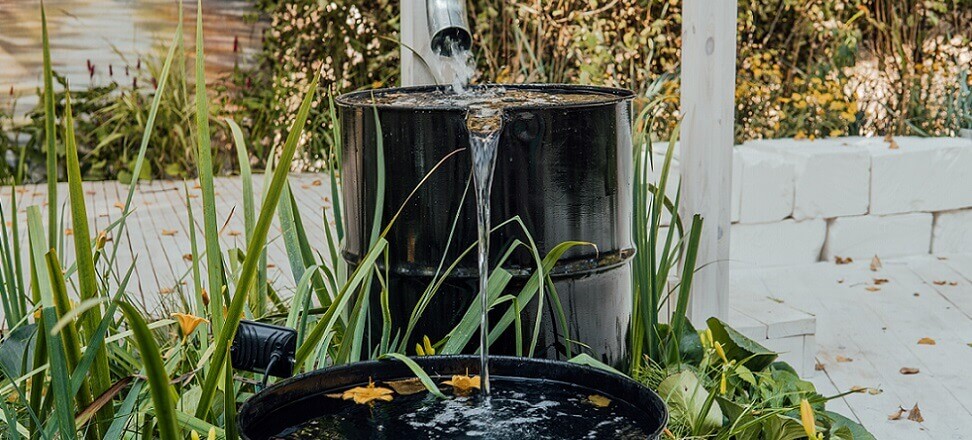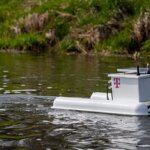Retention is a topic I have been dealing with professionally for years. Before writing this article, I submitted it to our editorial board for discussion. We have long considered who would be an appropriate expert to express a balanced opinion on this phenomenon. Why is there such a need? And where does this dilemma come from? The answer is simple – where you put your ear, there is a different tale. In principle, this is not surprising if we took the topic of shades of gray, but not such an economically and socially important issue as retention. These heard voices are mostly extreme – they either advocate restoring all watercourses to nature or concreting them.
Why and who does retention serve?
Retention, in the simplest terms, is the retention of water where it has fallen as precipitation. We have low retention and high retention, natural and artificial. It serves everyone and is undoubtedly very desirable in any place. So why the controversy surrounding the topic? It all boils down to the way water is retained, or the performance of what we will later call retention. We can do this naturally, by collecting water in river valleys unaltered by human activity, in forests, wet meadows or marshes, and artificially, among other ways. baffling our rivers with dams and creating reservoirs. Each of these methods has its own benefits and limitations, but most importantly, not everyone everywhere can be used and not everyone serves the same purposes.
How is it with us?
It is worth noting at this point that we are currently dealing with all types of retention in Poland. We have an artificial one in the form of large dam reservoirs, we have done a number of measures for small retention, and besides, all areas left to nature also have their own retention capacity. This ability to retain water in the environment runs differently in forests, and differently in agricultural fields, meadows, wetlands or urban areas. It also depends on the terrain and land use, as well as the structure, type and chemical composition of the soil. And then there are a number of other factors that can affect its size in a given area.
Natural retention
Activities that support natural retention are all those that increase the storage potential of water in the soil, landscape or aquifers. This is nothing more than restoring ecosystems to their natural characteristics and processes. The catalog of natural retention measures includes renaturalization of rivers and floodplains, restoration of lakes, restoration and maintenance of meadows and pastures, creation of buffer strips, and application of good agricultural practice. In urban areas it is: rainwater harvesting, elimination of ponding, use of permeable pavement, absorption wells, rain gardens and much more. So we have a wide range of options to support nature. The benefits of actions that restore or promote natural retention are many, from maintaining biological flow in rivers and mitigating the effects of climate change to improving water quality and protecting biodiversity. On the other hand, Constraints are primarily due to conditions of economic use of water resources.
Artificial retention
It should be noted that the so-called. Artificial retention is mainly hydrotechnical and land reclamation measures. Its division into small and large is important. Small primarily involves the creation of small bodies of water, including ponds, and its negative impact on the environment is negligible, especially with good practices to minimize it. Local small reservoir retention functions may include:
- Drought mitigation (e.g., for irrigation in agriculture and forestry);
- Meeting the needs of the population (drinking water intakes);
- Flood protection (polders, dry reservoirs);
- Electricity production (small hydropower plants);
- Recreation (e.g., swimming areas, fishing ponds);
- Support for biodiversity (e.g., in protected areas that have lost their natural ecosystem capacity);
- Improving the water balance (the least frequently used, to reduce erosion, retention of surface runoff or recharge of underground aquifers).
Of course, not all of the above functions of small reservoirs are necessary for sustainable water use. Where possible, use that threatens the environment should be excluded or restricted.
What about large tanks? As a rule, they perform complex (multi-purpose) functions. The purpose of their construction and operation is, among other things. Flood control, energy extraction, municipal water abstractions or drought prevention, runoff regulation or irrigation. Thus, the functions of small and large retention may be similar, but the impacts on natural ecosystems are no longer. There are a number of scientifically and practically proven “disadvantages” of high retention, with which everyone can become familiar. Undeniably, as a result of baffling the river with a dam, the role of the valley changes completely, we are dealing with a completely different, artificially created ecosystem. And although it happens that a dam reservoir, after years of operation, is included in a protected area, the changes remain irreversible.
Does the retention tale have a chance for a happy ending?
Tackling the effects of climate change, in the context of water management, is a huge challenge. The water balance is shaped by temperature and precipitation, and these, along with the observed changes, cause the intensification of extreme phenomena, such as floods and droughts, that we all feel. Increased winter precipitation is forecast in the coming years, but that doesn’t mean we’ll get rid of the summer drought problem. The persistence of high temperatures in the winter promotes greater infiltration of water into deeper aquifers, which is especially important for the ability to use this resource here and now.
If we don’t retain the water – don’t take advantage of retention – it will drain away from us quickly through rivers into the sea. Let’s remember that water from rainfall is free, while that taken from the water supply is no longer.
For several years there has been a perceived lack of dialogue between policymakers, academics and NGOs on the topic of retention. Above all, there is a lack of targeted, sustainable action in this area. There is talk of massive hydroelectric facilities (construction of reservoirs) or extensive restoration efforts (restoring rivers and wetlands to their natural functions). What is certain is that both require a huge amount of money. What is lacking is a focus on actions that each of us can implement. There is also a lack of broad education in this area. What can a city dweller do for himself and the environment, and what can a rural resident do? But has anyone heard of it? Does anyone know how to do this? Can the same measures in urban areas be applied in rural areas? When we go to a city or municipal office, will we learn more about this microretention? You certainly know the answer for yourself. Disagreement does not serve nature. I’m not in favor of the concrete massacre of Polish rivers, but I have in the back of my mind the thought that we won’t pull water from the swamps. And if we don’t know how we should be involved in protecting our water, the consequences could affect everyone in the coming years, and it won’t be a matter for future generations as previously thought.

 Polski
Polski






